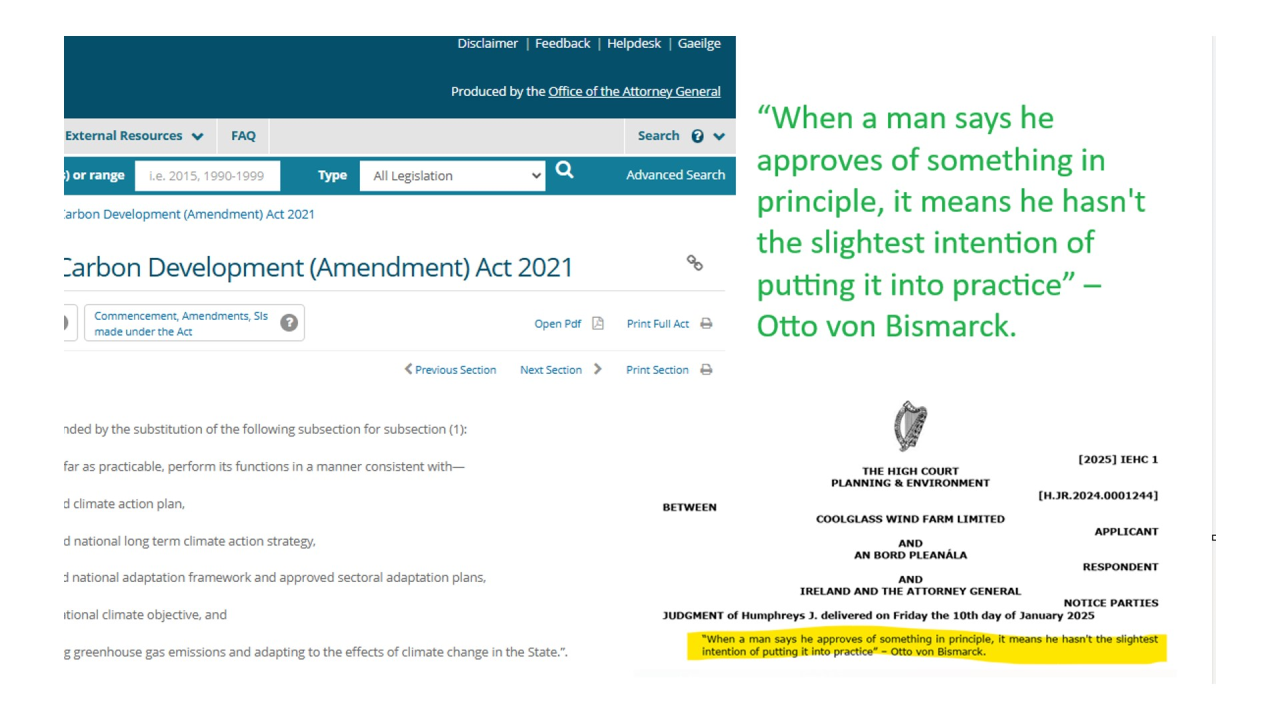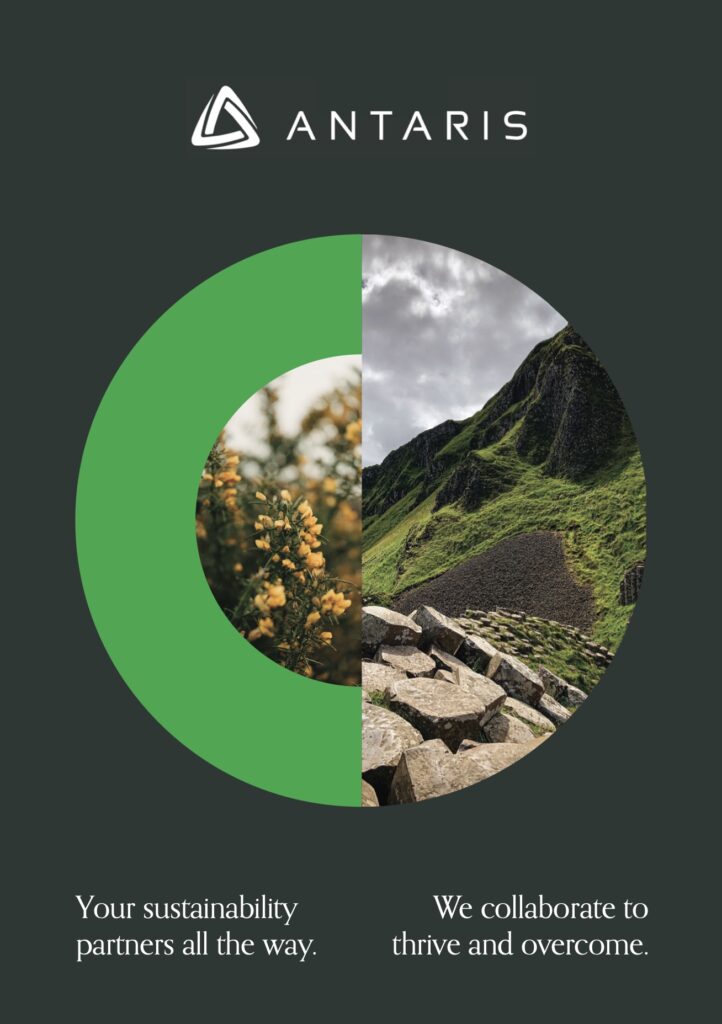A High Court Case Every Public Body Should Pay Attention To
A recent High Court judgement by Justice Richard Humphreys has shone a spotlight on Section 15 of Ireland’s Climate Act. While the case itself is about An Bord Pleanála rejecting a wind farm, the judgement’s implications go far beyond that. It’s a proper wake-up call for every public body. If you’ve time, you can read the full judgement here.
What’s Section 15 Again?
Section 15 is all about making sure public bodies do their work in a way that supports Ireland’s climate goals. The law says:
“(1) A relevant body shall, in so far as practicable, perform its functions in a manner consistent with— (a) the most recent approved climate action plan, (b) the most recent approved national long term climate action strategy, (c) the most recent approved national adaptation framework and approved sectoral adaptation plans, (d) the furtherance of the national climate objective, and (e) the objective of mitigating greenhouse gas emissions and adapting to the effects of climate change in the State.”
It sounds fairly straightforward, but Justice Humphreys made it clear that An Bord Pleanála wasn’t taking this seriously enough.
The “Have-Regard-To” Debate
When the Climate Act was being put together, there was a lot of worry from people (myself included) about whether the wording of the obligation was strong enough. Justice Humphreys didn’t dodge the issue. He broke down Section 15 in detail and laid out a clear hierarchy of obligations, from basic “have regard to” duties to full-on compliance:
“The basic fault line is between regard and compliance, but there are shades of emphasis within that. I can attempt to sketch the spectrum as follows:
(i) Simple have-regard obligations
(ii) Intensified have-regard
(iii) Comply-with to a reasonableness standard obligations
(iv) Comply-with insofar as relates to the achievement of objectives
(v) Comply-with as far as practicable or possible
(vi) Compliance subject only to specified exceptions
(vii) Unconditional comply-with obligations”
An Bord Pleanála, however, was putting other priorities—like visual impact and development plans—ahead of their climate responsibilities. That didn’t go down well with the Judge who wasn’t pulling his punches.
A Judgement That’s Surprisingly Lively
I usually find court rulings dry and tedious but this one’s actually a bit of a lively read. Justice Humphreys doesn’t hold back. He’s been criticised before for his “colourful” language and pointed criticisms, but you can’t say the man isn’t engaging. This is one of many sharp and biting observations:
“We have a massive and unexplained contradiction between the State’s opening rhetorical acceptance of the climate emergency as the supreme challenge of our times, combined with quibbling rejection and inadequacy of intention when it comes to actually operationalising that to its logical conclusions.”
It’s a bit of a slap, but fair. We’ve seen it all before—grand speeches about tackling climate change, followed by dithering when it comes to action. It’s not just Ireland, either; this happens everywhere.
What Does This Mean for Public Bodies?
Here’s the crux of it: Justice Humphreys says Section 15 isn’t just about how decisions are made on specific projects. It’s about how public bodies work across the board. He calls out for example:
- Proper training—inspectors and board members need to actually know their stuff when it comes to climate law and science.
- The right people on the job—only those with solid climate knowledge should be handling projects where it matters.
Now, imagine if this standard applied to every government department, local authority, university, and even Transport Infrastructure Ireland. It’d be a sea change.
The Bigger Picture
The climate crisis is huge, and talking about it without sounding overly dramatic is tough. But Justice Humphreys cuts through the noise. His point is simple: we can’t keep pretending to take climate change seriously while continuing business-as-unusual. Section 15 isn’t just a line in the law—it’s a responsibility, and it’s time public bodies started treating it like one.
So, is Section 15 finally showing its teeth? I hope so.









